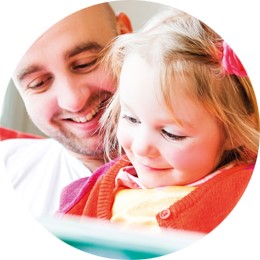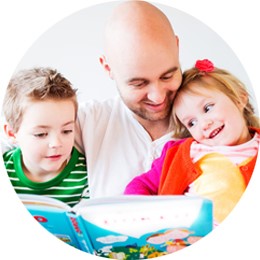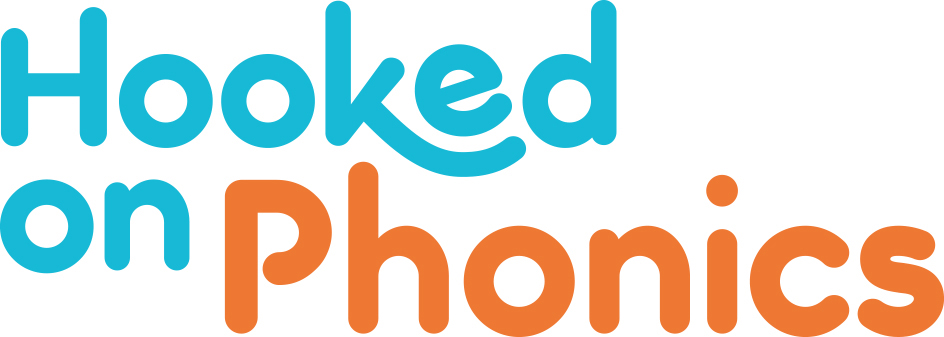Phonics, Fluency, Vocabulary, Comprehension: The ABCs of Learning to Read for Preschoolers
September 21, 2015
Preschoolers are busy learning and growing at an incredible pace every day. You’re probably noticing big changes in your little one’s speech—kids this age often have a deeper understanding of their world than we think. Other times, they make hilarious mistakes with words and other concepts!
Learning to read is a huge job, and it involves several key parts. Here’s an overview of what goes into the process and how you can help your preschooler head to school with a firm foundation of essential reading skills.
- Hears and identifies beginning sounds. (“What sound do you hear at the beginning of lap?” “llll!”) Be sure to say the sound of the letter rather than its name when talking with your child about this idea. In this example, you would say the lll sound rather than the name of the letter L.
- Thinks of other words with the same beginning sound. (“Can you think of other words that start with the llll sound? How about light, leg, etc.” Then let your child brainstorm.)
- Begins to understand that words are made up of different sounds that come together.
Phonics
- Each letter has its own special look and sound.
- Recognizes many letters in print (Four-year-olds often recognize 12-15 letters.)
- Recognizes the letters in their first name
- Connects several letter names and their sounds. (“That’s an N! The letter N makes the nnnnn sound.”)
Fluency
- Because young children do not yet read independently, they are not fluent readers. Fluency comes with time and practice.
Vocabulary
- Young children are building their vocabulary at a very rapid pace.
- Preschoolers should talk in sentences and be able to explain their ideas and thoughts—even though sometimes it’s a struggle.
Comprehension
- Ask and answer questions about stories that are read out loud.
- Use pictures in books to understand what is happening—and use them to make a prediction about what might happen next.
- Make connections between what happens in a book and their own lives. (“Hey, one time I woke up late, too!”)
- Understand the important message of a story. (“Those friends really showed how much they love each other. That was so kind.”)
Phonemic Awareness
What is it?
- Phonemic awareness is the knowledge that spoken words can be broken apart into smaller chunks of sound. These units of sound are called phonemes.
- Here’s an example: the word bat is made of three phonemes: the sounds /b/, /a,/ and /t/. When kids know that these three sounds are part of the word bat, they are showing that they have phonemic awareness.

How can I help my child develop in this area?
- Reading stories out loud with lots of rhyming words helps build phonemic awareness. Dr. Seuss books are perfect for this.
- Ask your preschooler to rhyme. (“Let’s see how many words we can think of that rhyme with ball!”)
- Practice not just letter names, but also letter sounds (“What is the name of this letter?” “M!” “Great job. Do you know what sound the letter M makes?” “Mmmmm!”)
Phonics
What is it?
- Phonics connect the knowledge of sounds (also called phonemes) to letter symbols.
- Here’s an example: The letter X looks like “X” and makes the sound ks.”
How can I help my child develop in this area?
- Point out letters and talk about their sounds every once in a while you read. This is easy to do if you are reading an alphabet book but can be done with any story. Sesame Street’s The ABCs of Cookies and Dr. Seuss’s ABCs are great books for this activity.
- Talk about the letters and sounds you see in your everyday life together. (“See that stop sign? What letter does the word stop start with? What sound does the letter S make?”)
- When your child knows many letters she sees and can say their sounds, start to talk about how letters work together to build words. (“Let’s look at this word. What sound does the first letter make?” “Nnnnn.” “Great! What about the second letter?” “Ohhh.” “You got it. Let’s put them together. Nnnnn . . . ohhhh . . . those letters make the word no!”) Keep this practice casual and fun!
- Start your child on a phonics learn to read program like the one from Hooked on Phonics, download a mobile app such as the Hooked on Phonics app which includes a section called ‘The Big Reading Show’, especially for preschoolers or Hooked on Phonics Online.
Fluency
What is it?
- Fluency is the ability to read words smoothly, at a good pace, and with expression.
- Here’s an example. If a character is very excited, the reader’s voice should sound excited, too. The child should not have to stop to sound out each word; the words should flow smoothly.

How can I help my child develop in this area?
- Read out loud to your child as much as possible!
- Make your voice match the feeling of the story to show your child how it sounds to read with expression. Bring your personality to your reading—it makes it more fun for both of you.
Vocabulary
What is it?
- Vocabulary is the dictionary in your child’s mind. The more word meanings your child knows the larger her vocabulary.
How can I help my child develop in this area?
- Talk with your child often and in a meaningful way. Help him learn new words about the world around him. (“Wow, look at this beautiful leaf. Did you know that leaves grow on trees and come off in the autumn? Autumn is another word for the season of fall.”)
- Read to your child often. Research shows that children’s books expose kids to a much broader range of vocabulary words than they would otherwise hear in conversation.
- Encourage your child to express himself clearly and completely. The more he speaks, the stronger his vocabulary.
Comprehension
What is it?
- Comprehension is understanding what a story is all about.
- Here’s an example. Being able to identify the main characters in a story, talk about what they do and how they feel, and explain what happens during the beginning, middle, and end of a story are all important parts of reading comprehension.
How can I help my child develop in this area?
- Read out loud to your child as much as possible!
- Talk with your child about what you are reading. Ask questions about the important things that are happening in a story, and help them make connections. (“This barn looks like the one we saw last week! Do you remember that?”)
- Have fun with this process; don’t feel like you have to drill your child with questions on every page. Just have a conversation about the parts of the story you think are interesting.


